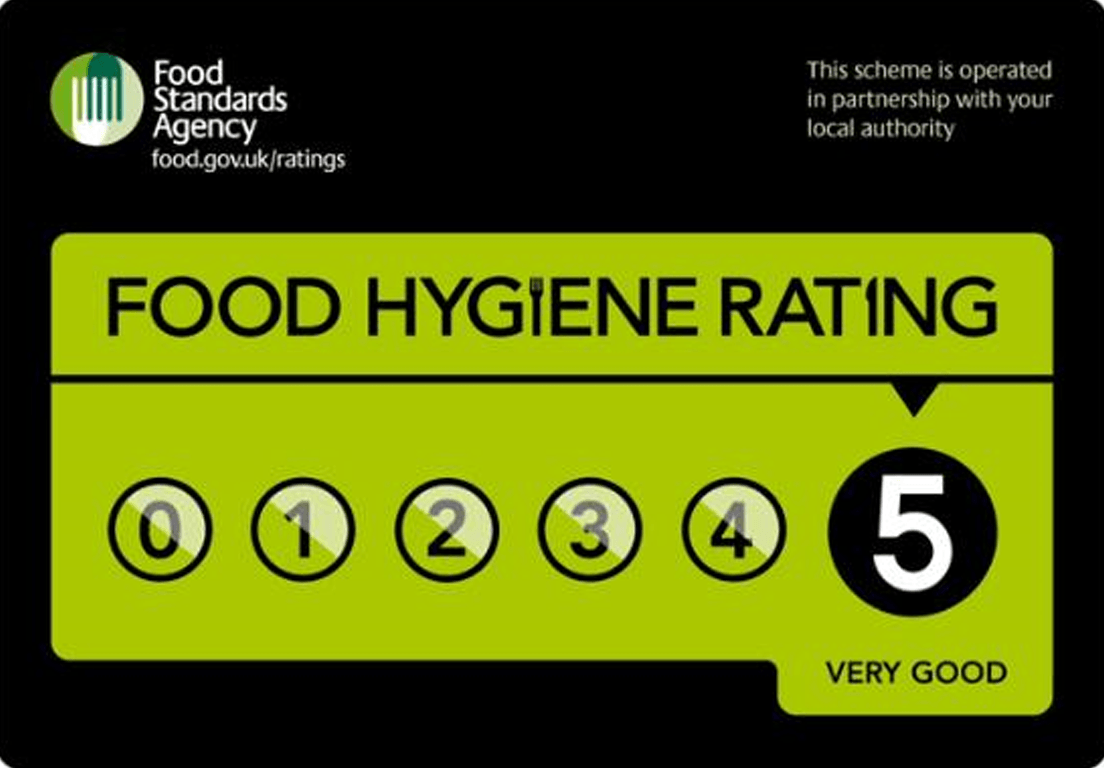We hear from our Strategic Advisor Sterling Crew on the importance of the Food Hygiene Rating Scheme and its impact upon food businesses.
We hear from our Strategic Advisor Sterling Crew on the importance of the Food Hygiene Rating Scheme and its impact upon food businesses.
The Food Hygiene Rating Scheme (FHRS) was introduced to improve the availability of information about hygiene standards of food businesses for consumers. It also aims to increase legal compliance and reduce the incidence of food-borne illness. The scheme supports consumers in making informed choices about where to eat or shop for food. It provides Local Authority food inspectors with a simple and proven tool to drive up food hygiene standards. For responsible food business operators it is a way of demonstrating their commitment to high standards of hygiene and enables them to differentiate themselves from the competition. The loss of revenue following a poor hygiene rating, as customers choose to eat elsewhere, is a motivating factor for food businesses to improve their hygiene practices.
Display of rating stickers is compulsory in Wales and Northern Ireland. Food businesses in both countries are legally required to display their ratings in a prominent place such as at the entrance or in the window of the premises. Disappointingly in England food businesses are encouraged but not required by law to display their rating. However, all ratings can be found online and currently FHRS ratings for approximately 479,000 food businesses are listed on the FSA website, representing nearly 92% of those businesses in scope. The date of the inspection can be found on the back of the sticker and online. The rating given to a food business only reflects the standards of food hygiene at the time of the visit by the local council.
More than hygiene. Calculating the FHRS score
The scheme covers how hygienically food is handled, how it is prepared, cooked, re-heated, cooled and stored. The physical condition of the premises is also addressed encompassing cleanliness, layout, lighting, ventilation, pest control and other facilities. It also covers how the food business operator manages ways of keeping food safe, training and systems to ensure good hygiene standards are maintained. One of the key criteria assessed relates to confidence in management, which covers the businesses food safety management, such as their HACCP controls. The food hygiene rating is not a guide to food quality, customer service or culinary skills.
The scheme has a number of safeguards available to food business operators who believe that their score is unfair or wrong. They can appeal to the Local Authority or request a prompt re-inspection following remedial actions, although in the case of a re-inspection, the original rating is published until any improved rating is issued. There is also a right to reply and businesses can respond online to the rating given by the council, though this is used infrequently.
FHRS ratings are followed by consumers, the media and pressure groups that increasingly benchmark food businesses using FHRS data. The FSA recently reported that the majority of people asked in England, Wales and NI (87%) said they had seen FHRS stickers. Displaying a high hygiene rating is a good advertisement for businesses that meet the requirements of the food hygiene law and the scheme has begun to resonate with the public, with around three in five respondents mentioning that a good hygiene rating score is important in their decisions about where to eat out.
Each local council is required to implement a risk-based intervention programme with the frequency of inspections of food businesses depending on their risk to public health. The aim is for food businesses that pose a higher risk to be inspected more often than those that pose a lower risk. Inspection frequencies can range from 6 months to 3 years or longer, depending on Local Authority resource pressures.
The impact of budget cuts
The impact of Local Authority finances on FHRS delivery cannot be ignored. A recent study reported that environmental health budgets per head of population have more than halved over the past decade. As a result, enforcement visits by environmental health officers have fallen by nearly a half.
The increased transparency has seemingly led to significant improvements to business hygiene compliance levels year on year since the introduction of the FHRS. Over 90% of food businesses in scope are now rated FHRS 3 (Generally Satisfactory) or above, with approximately 70% rated FHRS 5 (Very Good). Food safety and hygiene must be a top priority for a food business operator regardless of size. Although compliance with food hygiene law does not eliminate the risk of food-borne illness, research indicates that premises with higher food hygiene rating scores are less likely to encounter outbreaks and have better results in microbiological analytical surveys.
The FHRS could be enhanced by increasing the consistency and probably more importantly the frequency of inspections and re-rating inspections across the UK. Some are years out of date. There is also a need to address the important issue of allergen management into the rating scheme. In England, where label display is not mandatory, only 52% of businesses display food hygiene ratings in their premises. Unsurprisingly I have yet to see a zero rating voluntarily displayed. This compares to 87% in Wales and 84% in Northern Ireland, where display is mandatory. This needs to be corrected if the scheme is to remain credible.
The impact of social media on food hygiene standards should not be underestimated. Consumers are said to be the new regulators, with organisations such as TripAdvisor giving the public an online facility for an influential, shared, instant and continuous customer review.
Take action
With fines on the rise and 61% of consumers scrutinising your FHRS score, it’s simply not worth the risk. At Dynamic Risk Indicator we can audit, advise and help you improve your FHRS score, with strategic services and operational software solutions to suit businesses of all sizes. 60,000 users can’t be wrong, Contact us today to find out more.
